Most drone travel guidance is aimed at consumer products such as the DJI Mavic, but what about taking an freestyle, racing or long range FPV drone abroad?
In this article I will discuss the problems that I faced when travelling with my FPV drone gear so you can learn exactly how to avoid such problems!
If you are planning on travelling with a specialist FPV drone then this guide will walk you through the process of international travel with your drone and how to travel safely whilst avoiding the pitfalls.
An Introduction To FPV Travel
There are some additional considerations when carrying such a drone. It is likely you will have many more ‘questionable’ items that you may not have when taking a DJI drone abroad.
Perhaps you already have some of the following questions that other articles did not cover…
- Can I travel with my toolkit containing sharp instruments, screwdrivers, blades and a soldering iron?
- Will FPV goggles be safe on an international flight? Can I put them in checked-in luggage?
- Do I need to remove a full-sized RC radio from my bag when going through security?
- Can I take batteries with XT60 connectors and exposed balance connectors through airport security?
- Can I travel with my toolkit containing sharp instruments, screwdrivers, blades and a soldering iron?
- What kind of bag is most suitable for transporting FPV equipment abroad?
I have now hauled my FPV setup through numerous airport security areas with varying degrees of ease. I have also taken it on countless busses, trains and subway systems.
In the last week alone I have made the following trips within Europe, taking my travel FPV setup:
- Porto, Portugal to Milan Malpensa international airport, Italy.
- Milan Malpensa to Milan city center via train and subway.
- Milan city center to Bergamo international airport by tram and bus.
- Bergamo airport to Zagreb international airport, Croatia.
- Zagreb city center to Zadar city center by bus.
On this leg of my trip I have taken my FPV setup on international flights, trains, busses, trams by taxi and also on some fairly long walks!
I decided to write this post to share my firsthand knowledge of travelling with FPV equipment.
My intention is not to just regurgitate rules and regulations that can be found online but to give a real-world account of what it is like to travel with FPV equipment and to share the tips and tricks I am learning on this exciting journey!
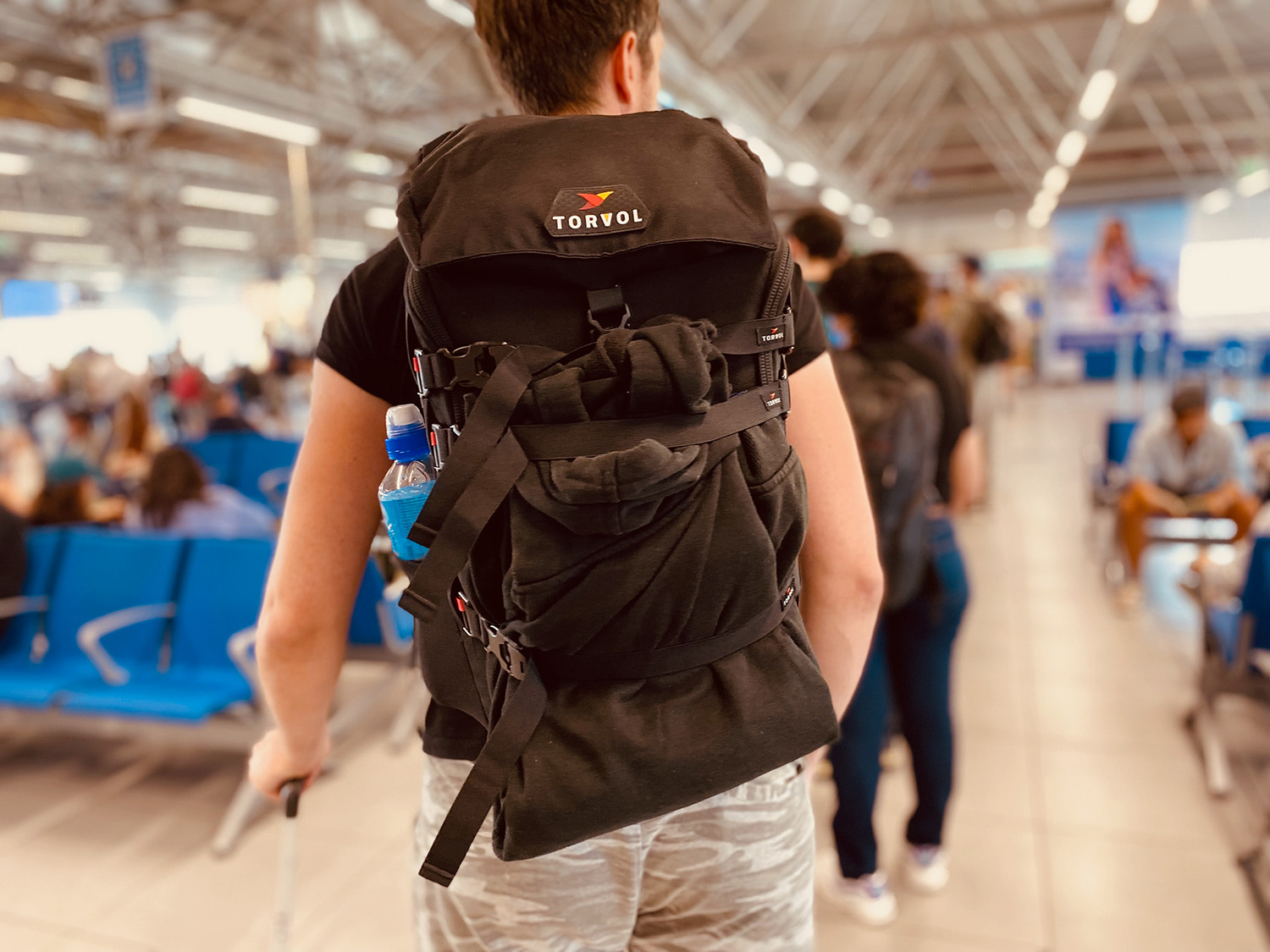

Can I Take an FPV Drone On A Plane?
Yes, you can take your FPV drone on a plane, including all of the accessories that you will need to maintain it and to fly.
Of course taking all of the necessary equipment requires some planning and there are some things to consider.
Here is a shortlist of my top tips and considerations:
- LiPo battery safety is paramount. I always travel with all LiPo batteries in a LiPo bag with the exposed terminals taped up.
- LiPo batteries must be taken onboard in a cabin bag.
- Minimise the amount of batteries that you are taking. More batteries adds more weight and more risk.
- Ensure that each battery is labelled with the watt-hours (Wh) value.
- Sharp tools are the next most important consideration. They should always be stored safely and put in checked-in luggage to avoid problems going through airport security.
- Minimise the amount of equipment that you take onboard in a cabin bag. Stick to delicate items and LiPo batteries.
- Pack your bag with the view that security may want to unpack it, or they may ask you to remove a majority of the contents.
- Remove props from drones and put them inside either your checked-in or cabin bags. I would not recommend travelling with them strapped to a backpack.
- If checked-in bag weight is a concern, try moving some clothes to your drone backpack as these tend to be surprisingly heavy, more so than drone accessories.
- Invest in a portable suitcase scale to weigh your bags and take it with you, especially if you are using budget airlines! I found weight to be more of a concern than space.
These top 10 considerations outline things that you should consider when travelling with your FPV setup. Let’s take a look in more details.
How To Travel With RC Hobby LiPo Batteries
To the untrained eye, RC hobby LiPo batteries might look like the definition of a health and safety hazard!
Unlike our peers who fly consumer drones, we do not have consumer style batteries that fit into a dedicated battery bay.
Although RC hobby batteries look a little less polished than their consumer-style cousins, the risks and regulations are the same for all batteries.
The LiPo Battery Safety Lecture
First and foremost you should only be travelling with batteries that are safe for general use, period.
Do not travel with or use batteries that are physically damaged in any way (crash damage or otherwise).
Do not travel with batteries that have poor quality wiring or soldering.
Do not travel with batteries that have any part of their electrical insulation compromised.
That is not an exhaustive list of common-sense points that you should adhere to regarding battery safety.
If you have any doubts about the safety of your LiPo batteries you should neither travel with nor use these batteries at all. Follow the local regulations in your part of the world for safe disposal of these batteries.
If you are anything less than an expert in LiPo safety, it would be very wise for you to become one prior to using LiPo batteries.
Why is this so important? Please take a moment to watch the following educational video:
LiPo Safety Resources
If you have any doubts at all about the safe handling and usage of LiPo batteries, the following resources should help you to better understand how to use them safely.
- Lipo (Lithium) Battery Safety Guide
- LiPo Battery Safety 101: A Quick Guide
- The Safe and Effective Use of Lithium Polymer Batteries in Model Flying
How To Isolate LiPo Battery Terminals
The terminals in both XT60 and balance connectors are mostly isolated so the risk of a short circuit is quite low.
However where there are exposed battery terminals there is always some risk of an electrical short, which we absolutely want to avoid.
When packing batteries for any sort of of travel, especially international flight, it is always worth isolating the battery terminals.
It is very simple to electrically isolate the battery terminals. You can use electrical tape to cover the battery terminal, both balance plug and the main connector. You can also use a reusable cap such as this one.
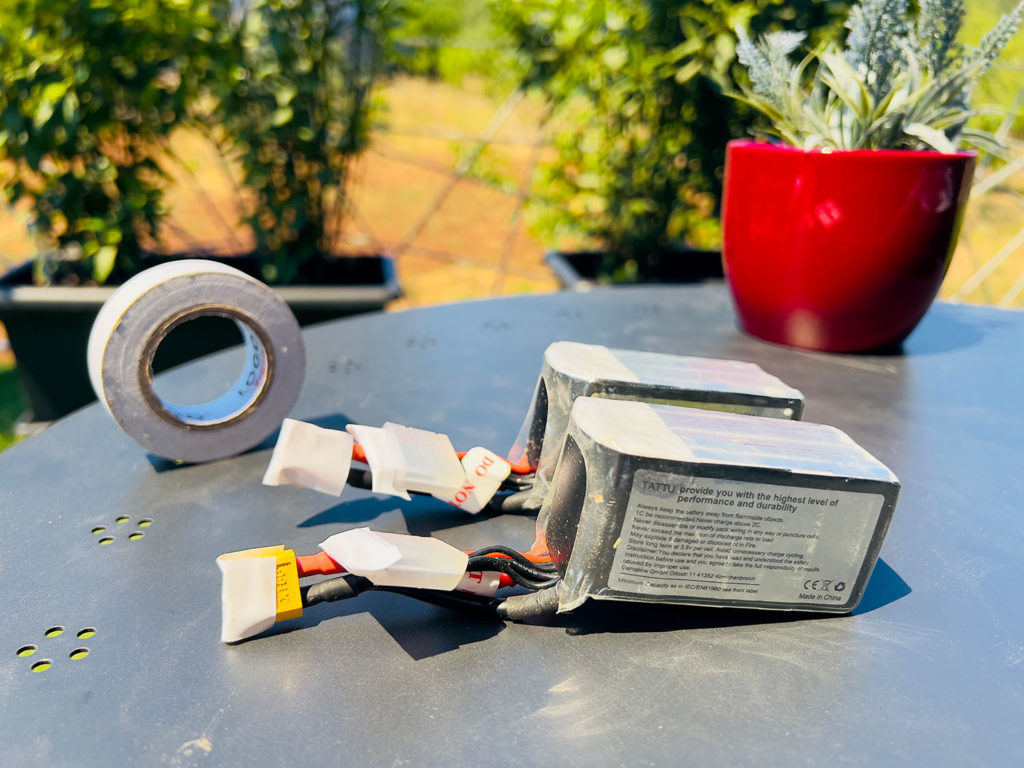
Use a Dedicated LiPo Safe Case
As well as protecting LiPo batteries from short circuit we should also prepare for the event that the LiPo batteries actually catastrophically fail.
If case you don’t know what I mean by catastrophically fail, please check out the video in the safety lecture above!
Now of course you absolutely do not want that to be happening to your battery whilst it is packed in your travel bag in the overhead locker of an airplane!
Therefore it is absolutely imperative that you understand LiPo safety before travelling with your batteries.
However in the unfortunate event of your LiPo failing during travelling, you ideally want some protection against the fire!
When flying in a passenger aircraft, the cabin crew are trained to deal with lithium batteries that fail in such a way. This type of failure can also happen with laptops, mobile phones or other similar devices.
In order to better contain a fire in the event of battery failure during travel, I would absolutely recommend using a dedicated LiPo safe bag to store your batteries.
Although Lipo safe cases look just like a standard soft case, they are made with fireproof materials that are designed to contain a fire in the event of battery failure.
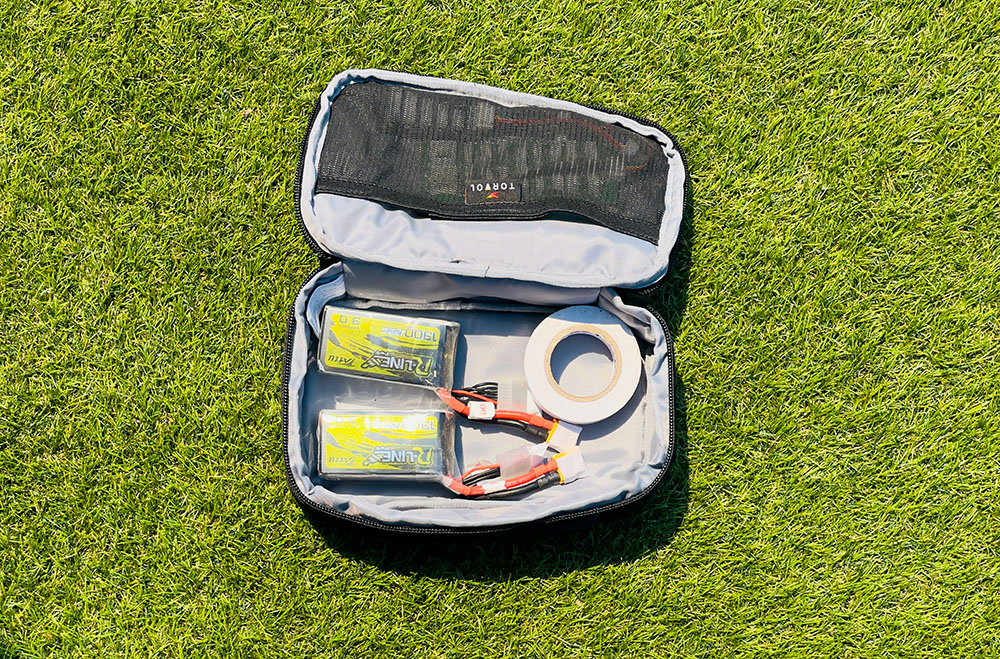
Personally I use a Torvol LiPo safety case that is compatible with the attachments on the Torvol Urban Carrier backpack.
The case has a fire retardant fibreglass lining and treated polyester shell for durability.
I really like this case because it can be mounted on the outside of the Urban Carrier backpack when hiking to flying locations, but can then be stored inside the bag when travelling by public transport.
It large enough to keep several 6S flight packs, a 2S for goggles and a 2S for the transmitter, whilst having a convenient pocket for necessary charging adapters.
Check out my full review of the Urban Carrier backpack here or more specifics on the LiPo case can be found here.
Battery Watt-Hour (wH) Requirements
Airlines have their own individual policies as to what you can take onboard so you should check the policy of the airline you wish to travel with prior to packing.
However one thing that is fairly universal is that all of these companies are somewhat vague when they state their requirements.
Airline Regulations
There is a great resource here which details the requirements of many different airlines. Most of which have a blanket policy about spare Lithium batteries.
Although I would recommend checking the individual airline policies prior to travel, you will likely have no problems if you use some basic common sense.
Most airlines have a policy whereby there is a limit on the watt-hour of spare Lithium batteries that you can carry.
It is common for airlines to limit the watt-hours per battery pack to 100Wh, which is actually quite high (it is meant to cover laptop batteries, for example).
However some airlines then place further restrictions on how many ‘spare batteries’ you can travel with.
Of course all of this is highly ambiguous as it is blanket policy around ‘spare Lithium batteries’ and not FPV drone batteries per se.
Assuming you have followed the previous steps to isolate battery terminals and adequately store your LiPos, you should have no problems so long as you don’t travel with too many batteries.
I have travelled without any problems having the following batteries in my LiPo case:
- 1 x 2S LiPo pack for FPV goggles
- 1 x 2S LiPo pack for QX7S transmitter
- 2 x 2S LiPo pack for toothpick quad
- 2 x 3S LiPo pack for toothpick quad
- 2 x 6S LiPo pack for 5-inch quad
Labelling Batteries
Something else to keep in mind, which you may have already noticed, is that the airline industry like to discuss Lithium batteries in terms of watt-hours.
Hobby RC batteries tend to quote in terms of amp-hours and voltage.
Although it is possible to do some quick math whilst in airport security, it would be wise to be prepared and write the watt-hour rating on your batteries.
Remember that everything is at the discretion of airport security. If you have dangerous looking batteries and you don’t know what you are doing with them, security won’t hesitate to dispose of them.
However if you show that you are knowledgeable about electronics and have your batteries stored safely, security are far less likely to confiscate them. Afterall, they are human too and with human judgement!
In order to calculate how many watt-hours your batteries have, first take the mAh rating and divide it by 1000 to get the amp-hour rating, Ah.
Ah = mAh / 1000
Next, you can use Watt’s law to calculate the watt-hours by multiplying the amp-hours by the nominal battery voltage (which is written on the battery).
Wh = Ah x V
For example my Tattu 6S packs are 1300mAh.
Ah = 1300 / 1000 = 1.3 Ah
Wh = 1.3 x 22.2V = 28.86 Wh
As you can see, it is well within the 100 Wh limit imposed by airlines.
It is good to have an understanding of this calculation. If you were ever asked by airport security about the Wh of a pack that did not have this information, you could calculate it on the spot and possibly save your pack from the trash!
However if you want to write the value on each of your packs, it is quicker and easier to use a mAh to Wh calculator.
Can I Take FPV Tools On A Plane?
Yes, it is no problem to take an FPV toolkit on a plane, however I would highly recommend keeping it in checked-in luggage.
There are strict regulations governing the length of tools that you can take in carry on luggage. Note that you are not allowed to carry any type of hobby knife through security.
I keep my FPV toolkit in a separate pouch that can be mounted on the outside of my FPV backpack.
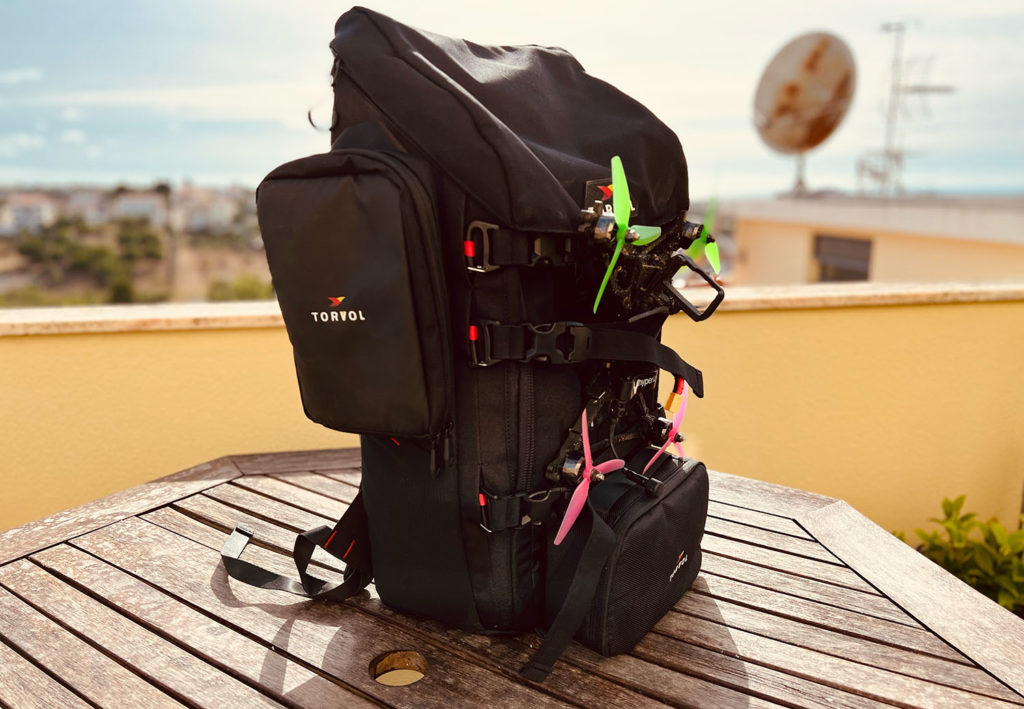
When I travel, I simply remove it from the backpack and put it into my checked in bag.
Once I arrive at my destination I reattach it to my backpack. This is one reason I really like the Urban Carrier backpack.
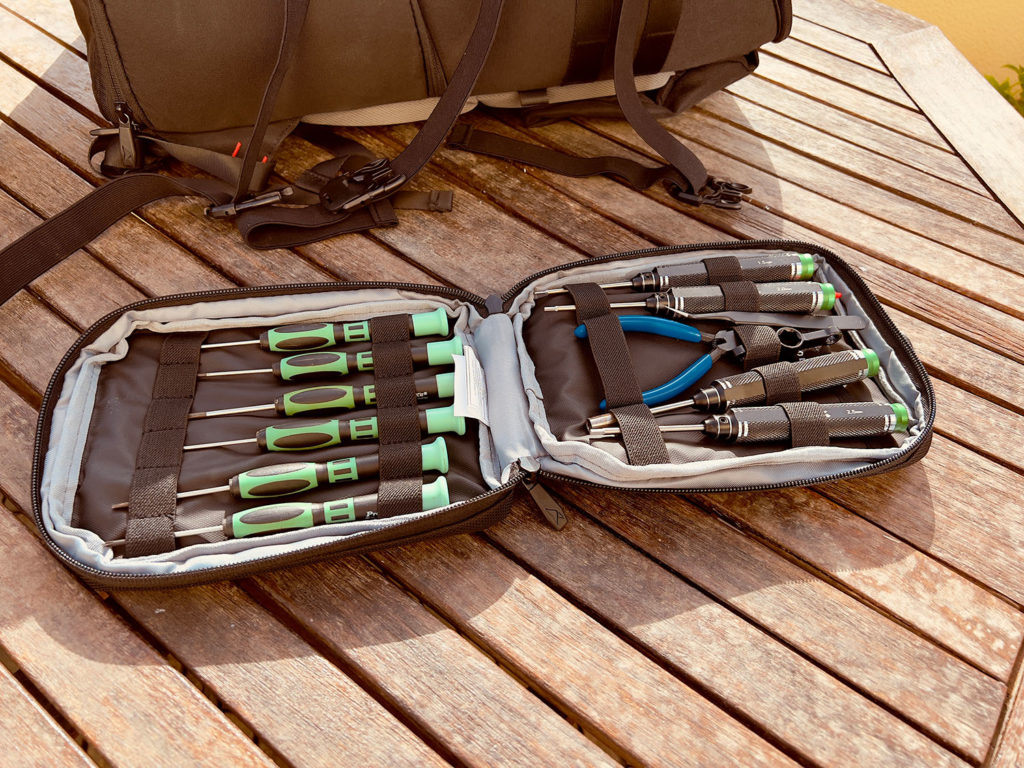
If you are taking a shorter trip and you are not planning on using a checked in bag, you must closely adhere to the regulations concerning tools and sharp objects if you need to take your tools.
You should check your individual airline for the appropriate restrictions relating to FPV tools. If you are travelling in the USA, you can check the Transport Security Administration (TSA).
You can use the following guidance from the TSA to better understand what can and cannot be taken in an FPV toolkit going into a hand carry bag:
- All kinds of hobby knives are prohibited and should be excluded from your toolkit.
- Scissors should be less than 4 inches from the pivot point and securely wrapped.
- Multitools may or may not be prohibited and must be securely wrapped.
- Screwdrivers must be shorter than 7 inches.
- Pliers should be shorter than 7 inches and sharp ends should be securely wrapped.
Personally I have always taken tools in a checked in bag so as to avoid any problems. If in doubt then leave it at home, you can always pick one up at your destination if you really need to.
Can I Take An FPV Drone Through Airport Security?
You can take an FPV drone through airport security. In order to make this process as smooth as possible, it is wise to prepare in advance and be aware of the restrictions.
I have taken my FPV gear through the following airports in the last 3 months with minimal trouble:
- London Gatwick Airport, United Kingdom – FPV bag went through without a check
- Larnaca International Airport, Cyprus – FPV bag went through without a check
- Ciampino International Airport, Rome – FPV bag had to be emptied and scanned 3 times
- Francisco Sá Carneiro Airport, Portugal – FPV bag opened and checked by security
- Orio al Serio International Airport, Italy – FPV bag went through without a check
- Franjo Tuđman International Airport, Zagreb, Croatia – FPV bag opened swabbed inside
Will Airport Security Search My FPV Bag?
Yes, in my experience there is approximately a 50% chance that airport security will want to search your FPV bag.
The biggest problem I had was when exiting Ciampino after visiting Rome. The first security officer wanted to put my backpack through the scanner a second time after taking a look inside.
She asked me to remove all electronic devices, so I opened the top and removed the 5 inch drone.
Once she saw that I was carrying FPV equipment she took a more relaxed approach and told me no need to unpack everything, just put the bag through again.
Upon a second pass through the scanner, another security officer got involved and became a little irate, asking me to pass the bag through a third time after emptying the contents.
I resisted rolling my eyes and went back to the scanner to pass the bag back a third time, this time emptying the contents as instructed.
With everything in trays I had no problem getting all equipment through the scanner. They never questioned the LiPo case and I have never been asked to open it whilst passing through any airport security.
What I learned from this ordeal was so long as you are exercising common sense, it is likely that the worst case outcome from airport security is some needless delay due to poor organisation/communication between colleagues, which could lead to you missing a flight.
In my experience so far it is not likely that you will major problem getting your gear through airport security, unless you have something obviously prohibited.
Just make sure you allow ample time for security. I have never once missed a flight when arriving at an airport 2 hours earlier.
How To Pack an FPV Drone In A Carry On Bag
My personal preference is to take as little ‘technical equipment’ as possible in my carry on bag as possible.
It is a complete annoyance to have to empty your entire FPV bag whilst passing through airport security. The less you need to remove, the better.
I prefer to pack the following more ‘delicate’ items in my carry on, plus the mandatory LiPos:
- FPV Goggles.
- VRx antennas.
- TBS Crossfire Tx module and antennas.
- QX7S Radio
- GoPro / HD Camera
- LiPo Batteries
I usually also carry a drone in my carry on backpack but this is to save weight in the checked in bag.
I wouldnt have a problem putting a drone into the checked in back, which may be especially necessary for those with a 7 inch or macro sized quad.
In addition to that there are some other non-FPV related items that also go in the bag for air travel:
- Bluetooth speaker (basically a giant LiPo)
- Laptop and charger
- Phone charger
- Portable WiFi hotspot
Note that it would be possible to travel with your Goggles or radio in checked in luggage, which could be a more comfortable option.
However I would only attempt this with a hard case for your Goggles and/or radio, to protect it against being damaged during transit.
You may also want to consider a travel insurance policy for your FPV gear which covers you against loss, theft or damage.
I pack all spare parts, tools, props and other smaller accessories such as USB cables and adapters in my checked in case.
When I pack my FPV bag for air travel I put the LiPo batteries right at the bottom, including the bluetooth speaker.
This is primarily for comfort, plus the Torvol Urban Carrier has zip on the side that gives quick access to this part of the bag, in the event of a LiPo emergency.
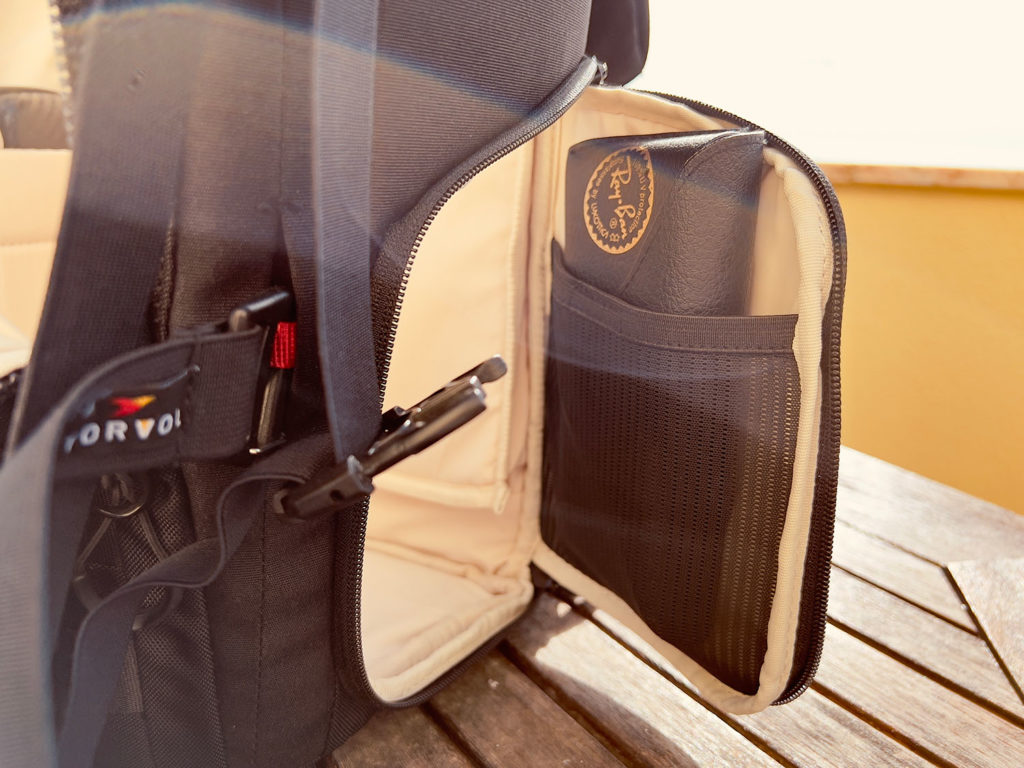
I then pack the remaining lower portion of the bag with clothes in order to save some weight in my checked in case.
I place the more delicate FPV gear on top of these clothes, which makes removing it easier should it be required when going through airport security.
Note that you only really need to remove larger items such as your Goggles and your radio. This is because larger electronic items block the scanners view through the bag.
Conclusion
Travelling is one of the most exciting and rewarding things that you can do in life. Bringing your FPV drone along for the ride and flying in new and exciting locations only adds to the experience!
The process of getting from point A to point B can be stressful, especially when having to take a large amount of luggage.
However with a little preparation and knowledge of the pitfalls it is possible to minimise the troubles and stress that you might encounter.
I hope by sharing my thoughts and some of my journey here I have helped you plan to travel with your FPV drone!
If you plan to travel but don’t yet have an FPV backpack, I would highly recommend the Torvol Urban Carrier. You can check out my full review and guide here!

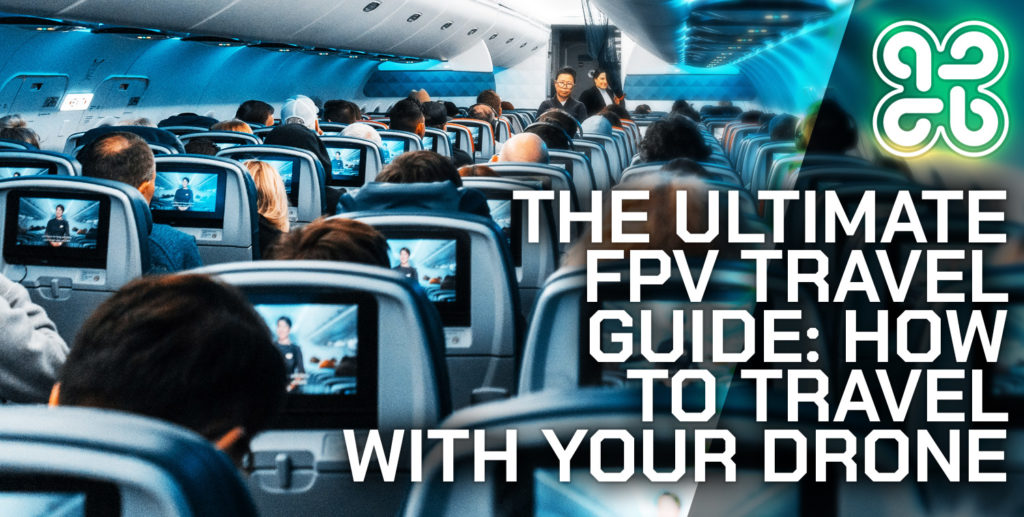
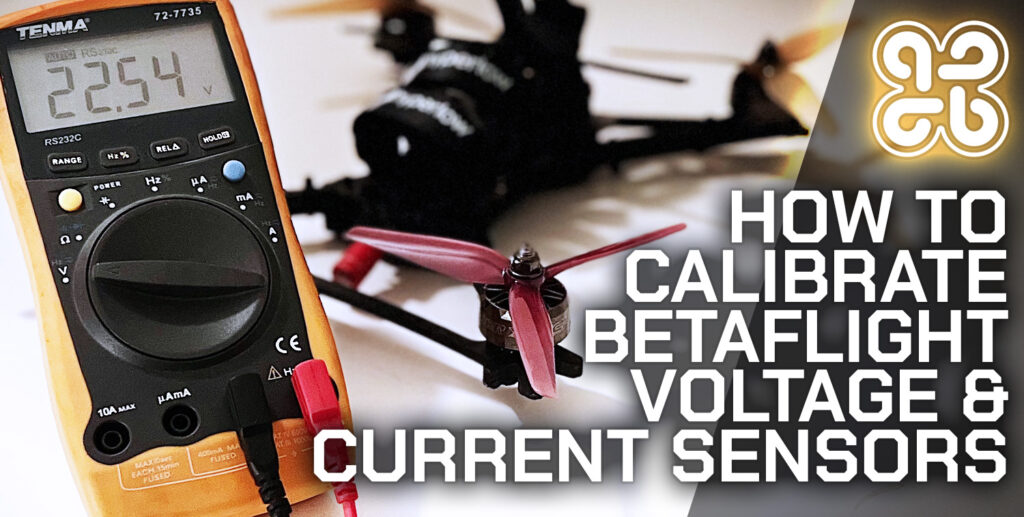
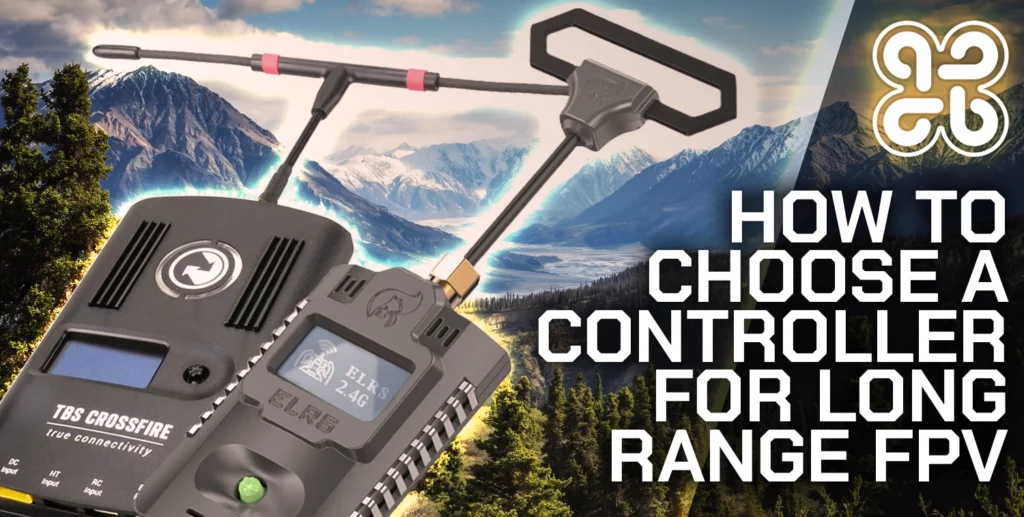

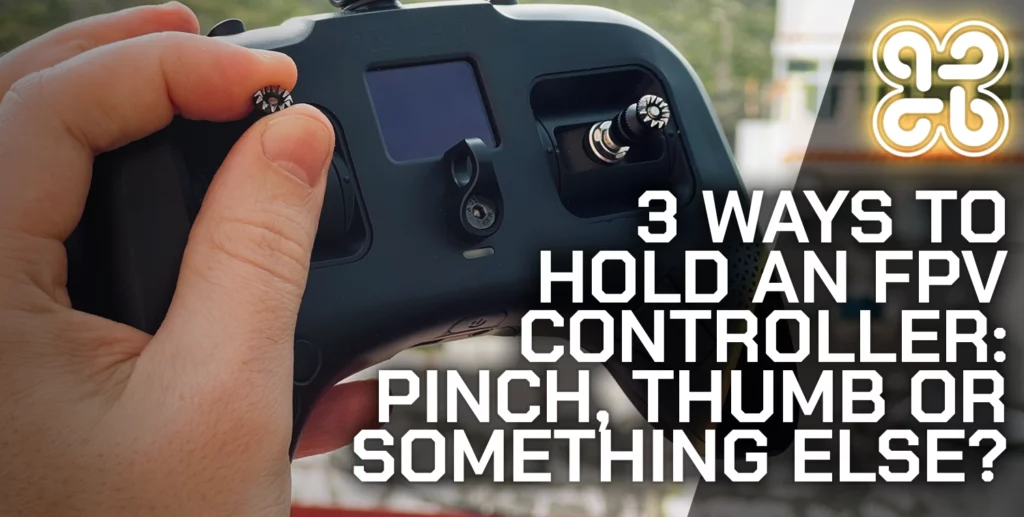
Hello, thank you very much for your article, it is very useful for everyone who has a fpv drone, please tell me, when traveling in Europe, did you have any pilot license and aviation approval, and which one exactly do you need to have? thank you in advance for your help and response.
Hi Danii, thanks for visiting! EU drone regulations are governed by EASA. Our hobby FPV drones do not need to be registered and you do not need a licence to fly (source. https://www.easa.europa.eu/en/faq/116454). If your FPV drone is over 250g then you do need to register yourself as a drone operator in the country where you will reside. If you live outside of the EU, you should register in the country where you will be staying. For registration, see here: https://www.easa.europa.eu/en/domains/civil-drones/naa, hope that helps!